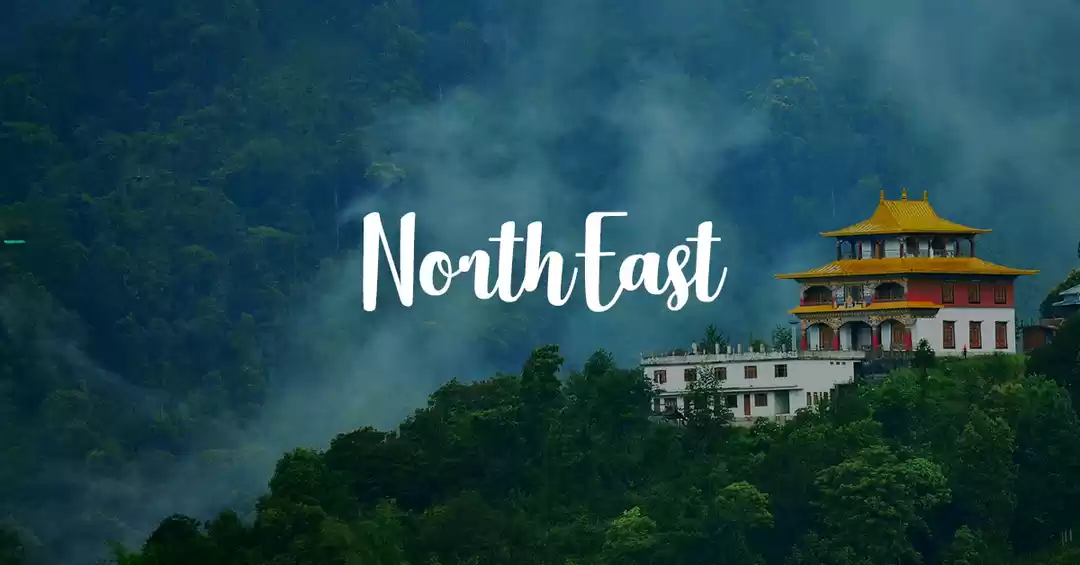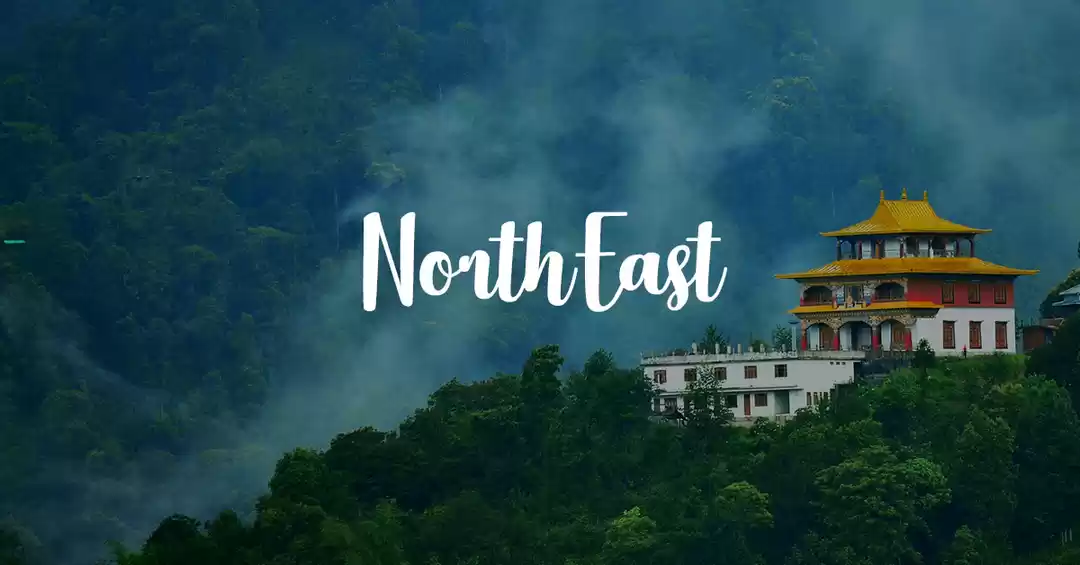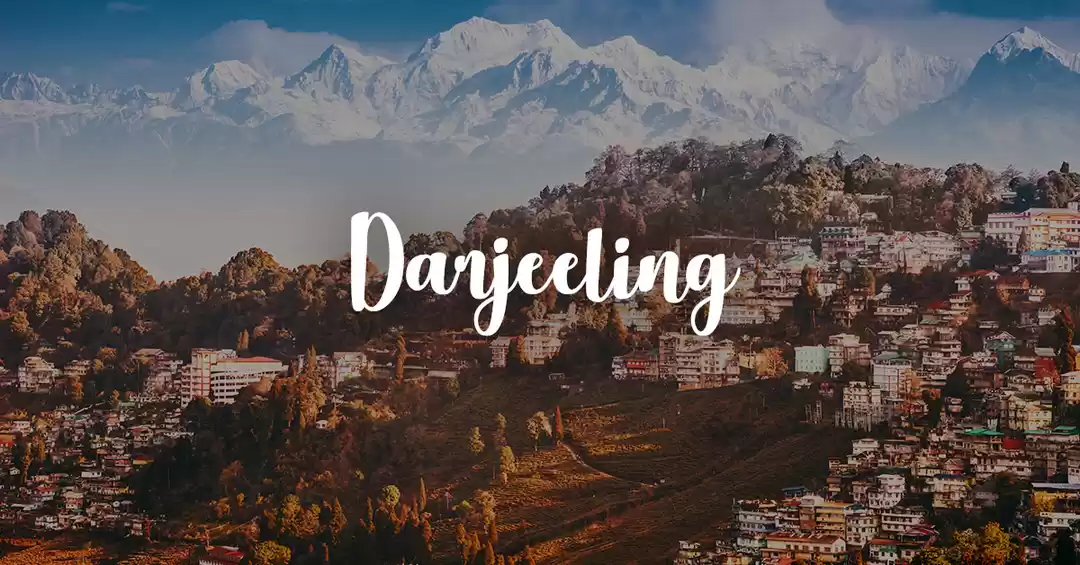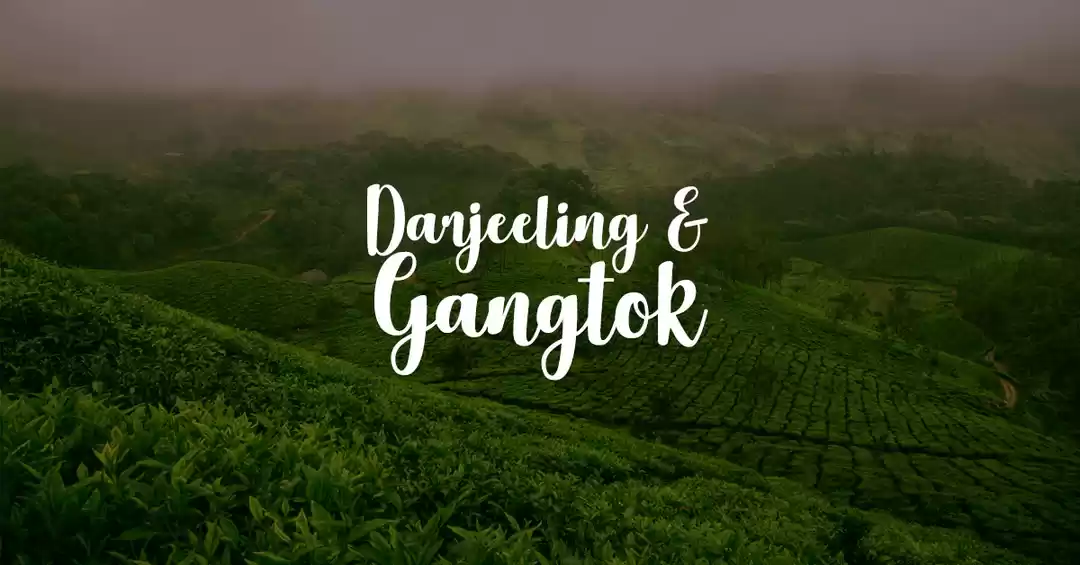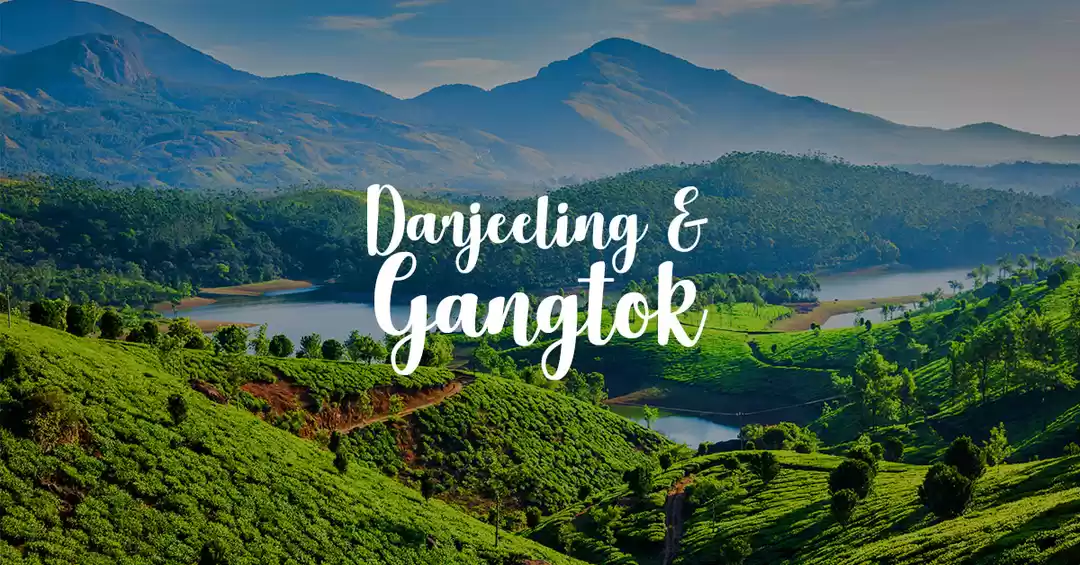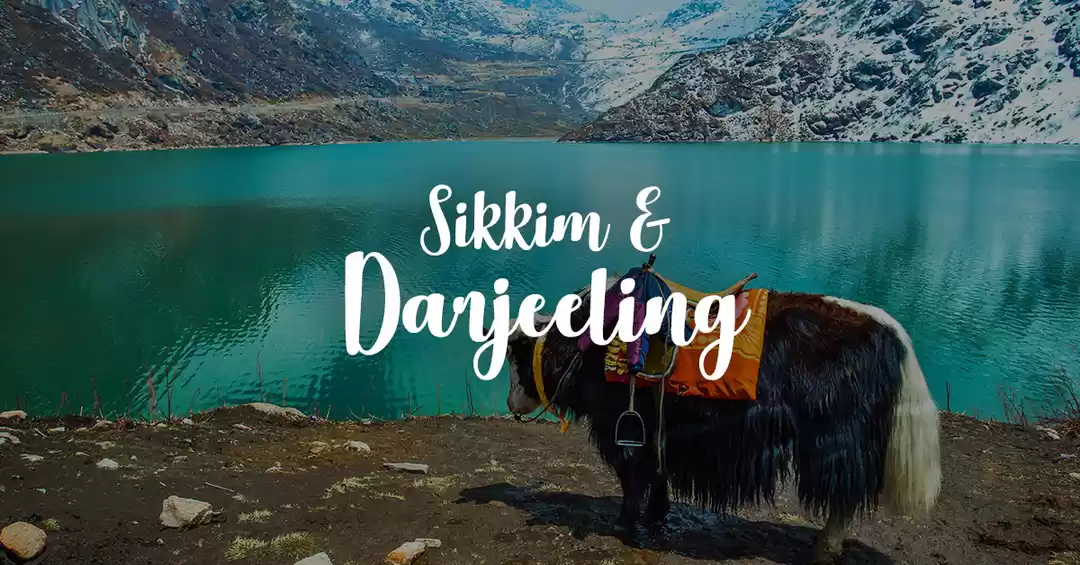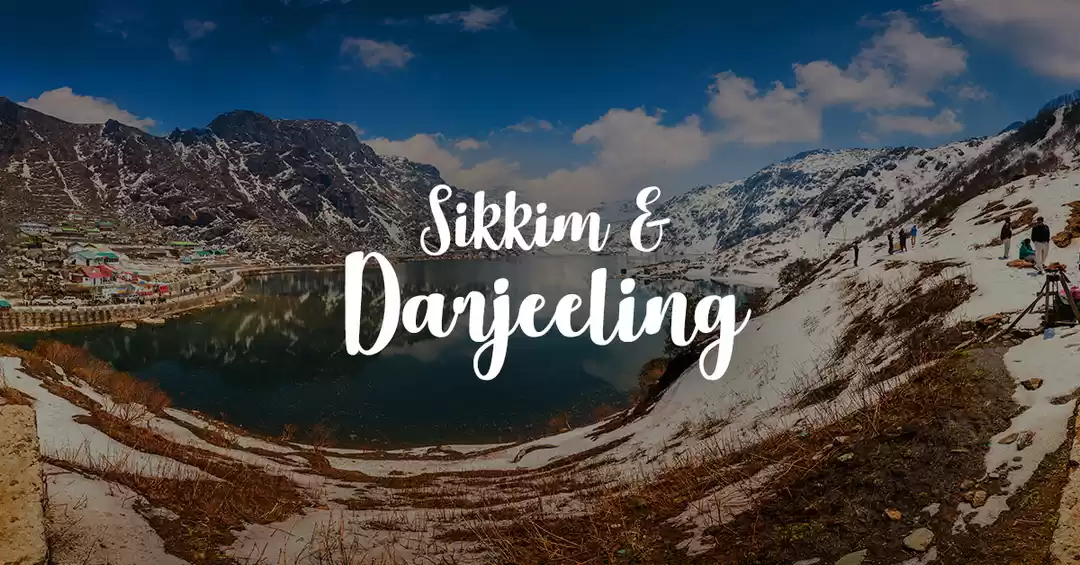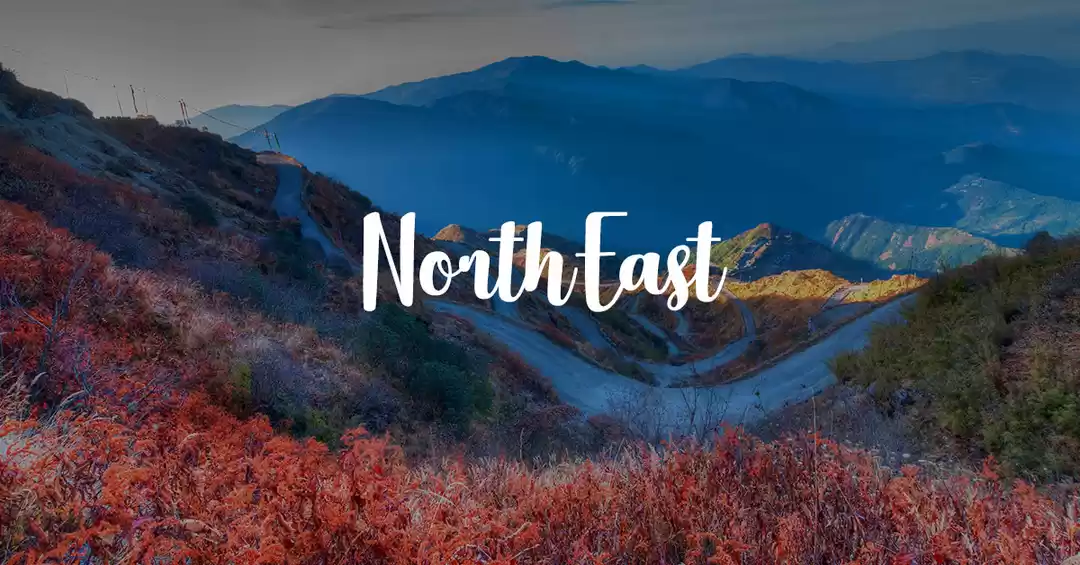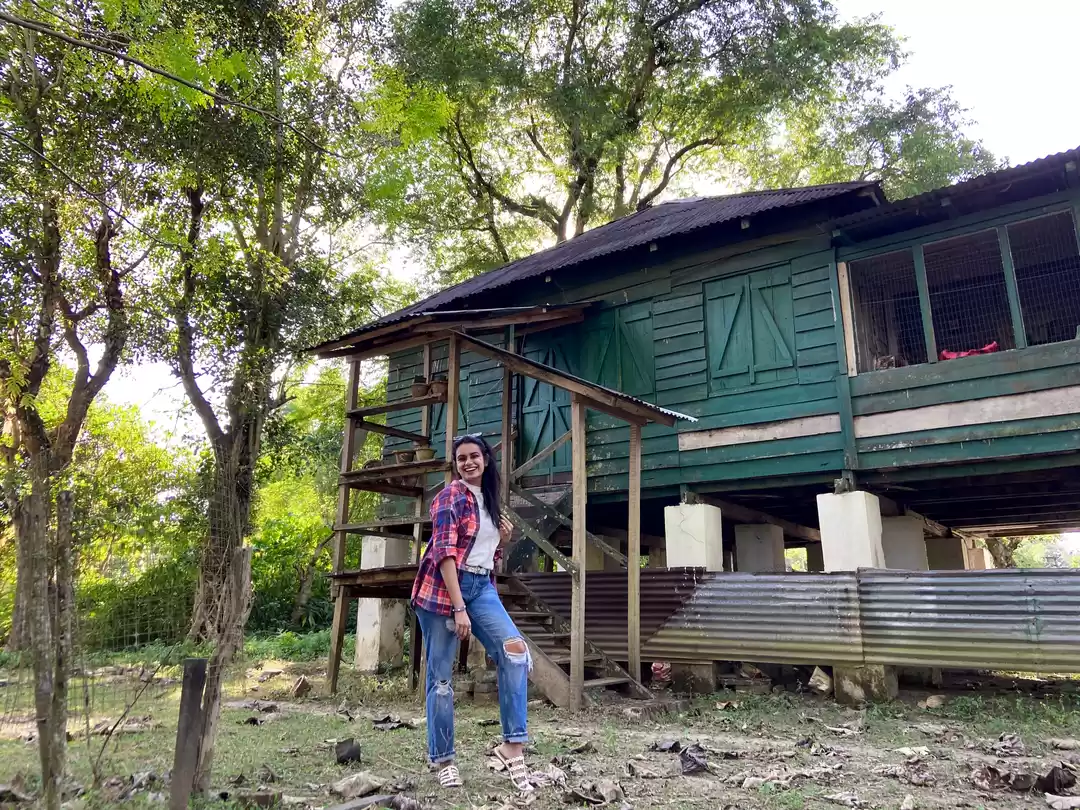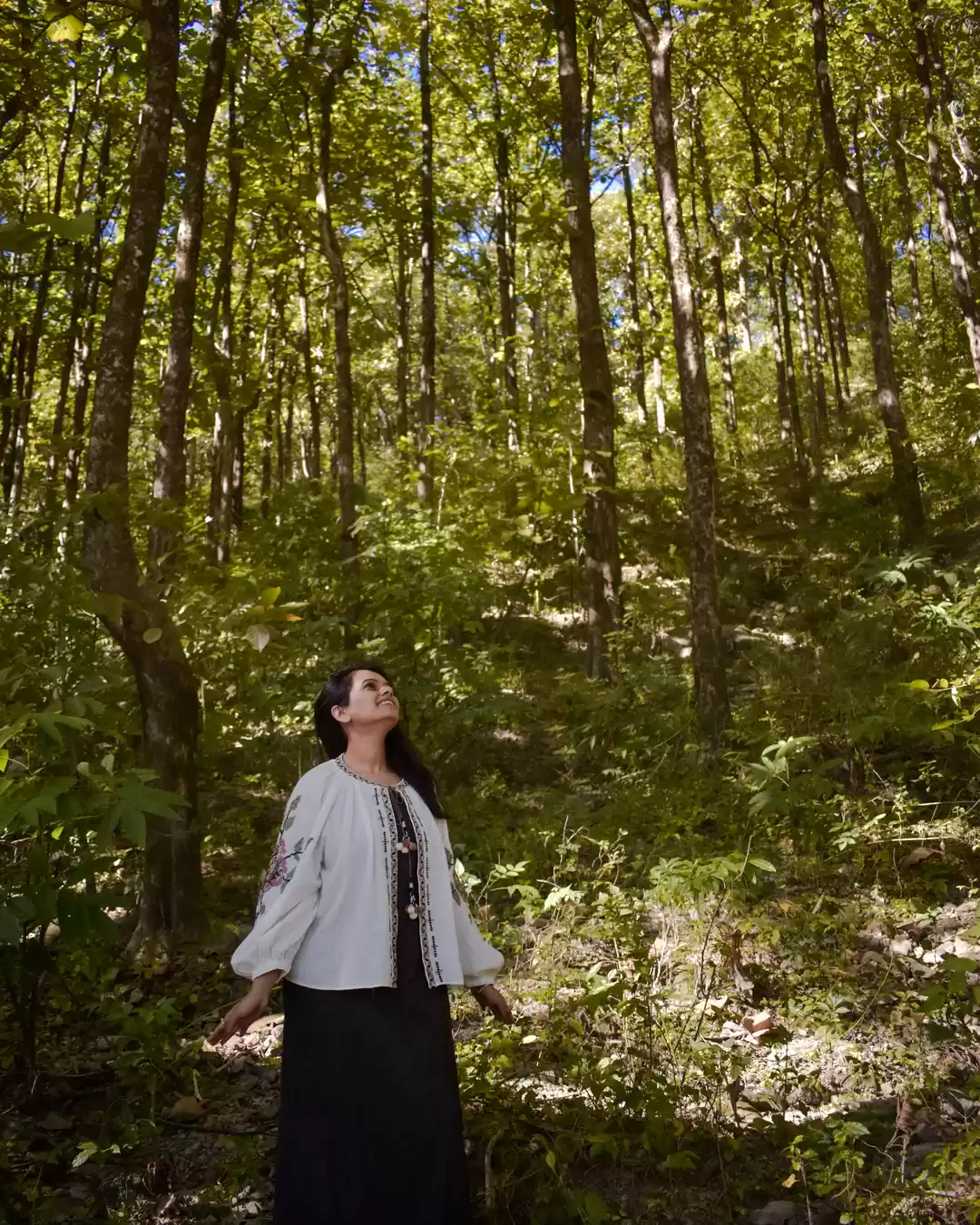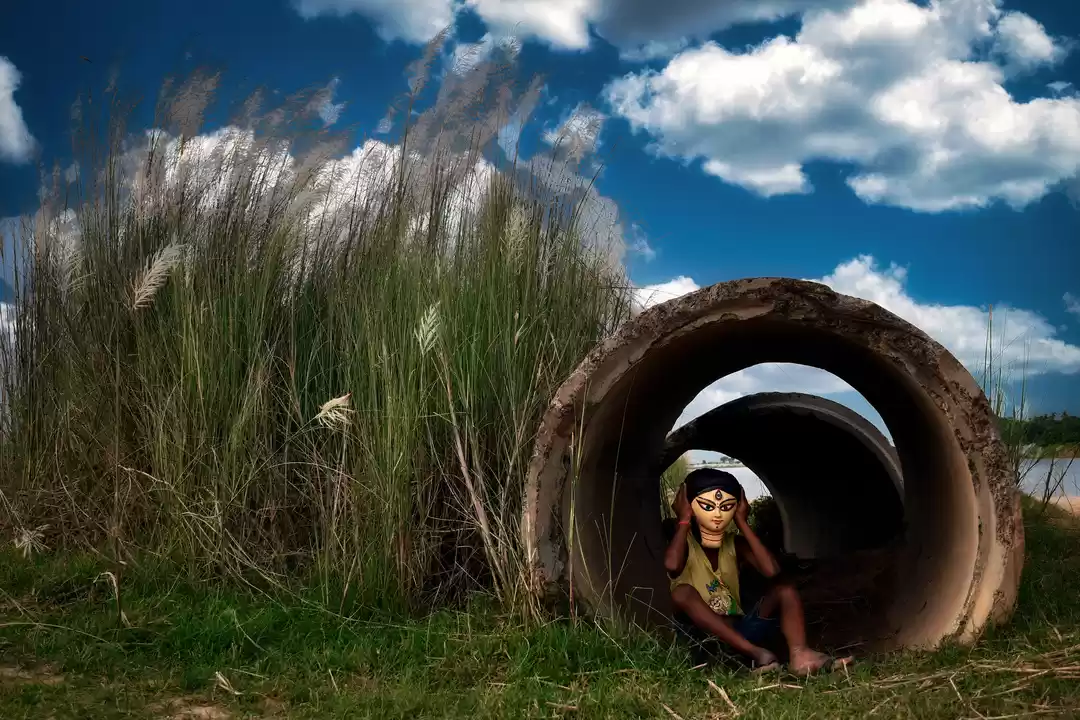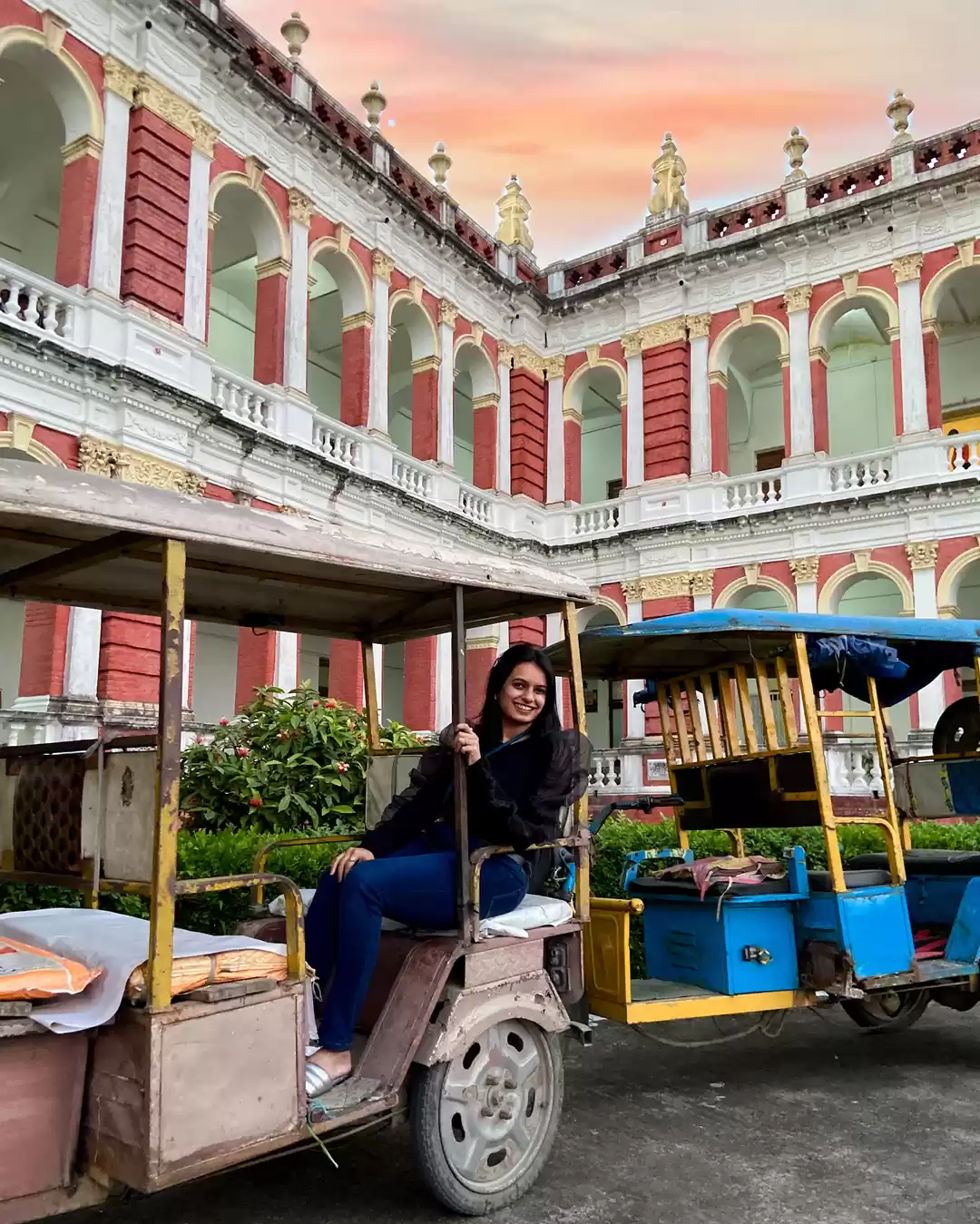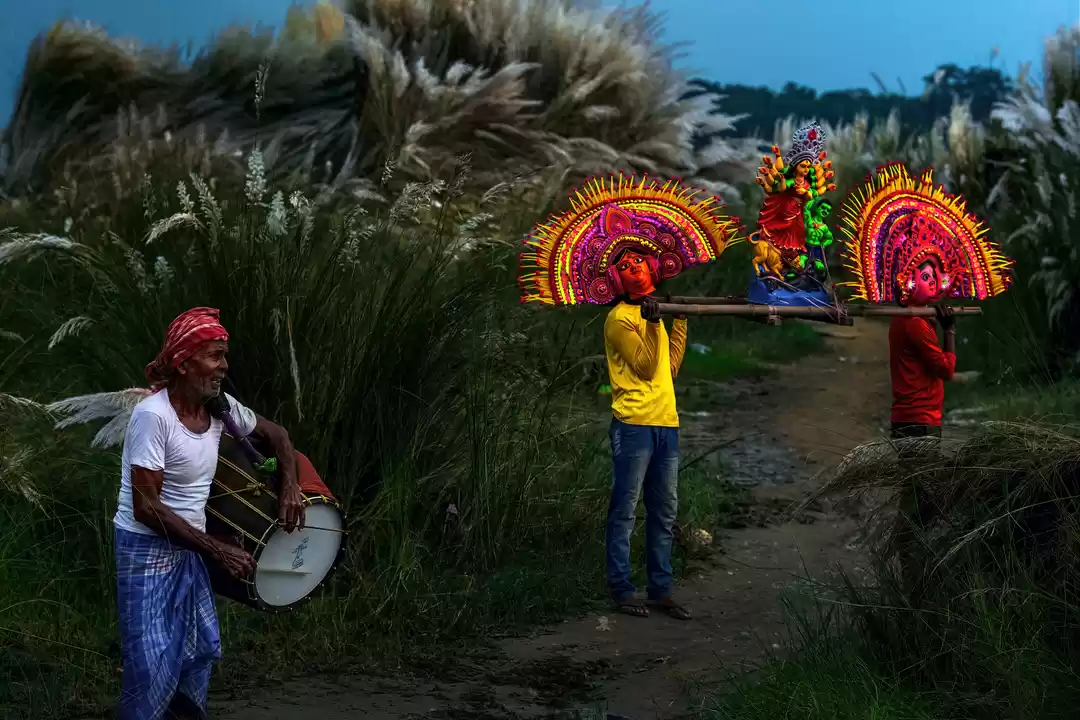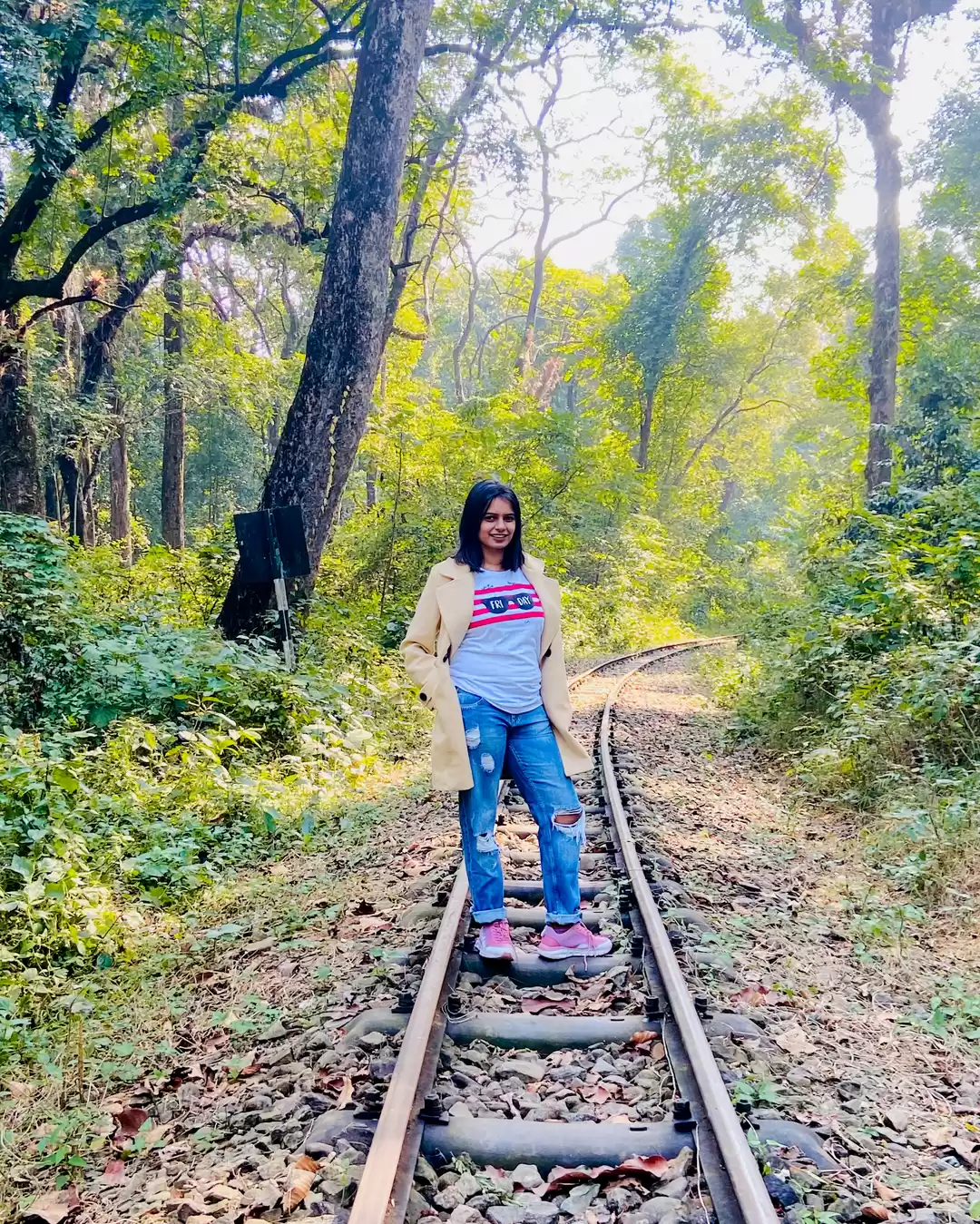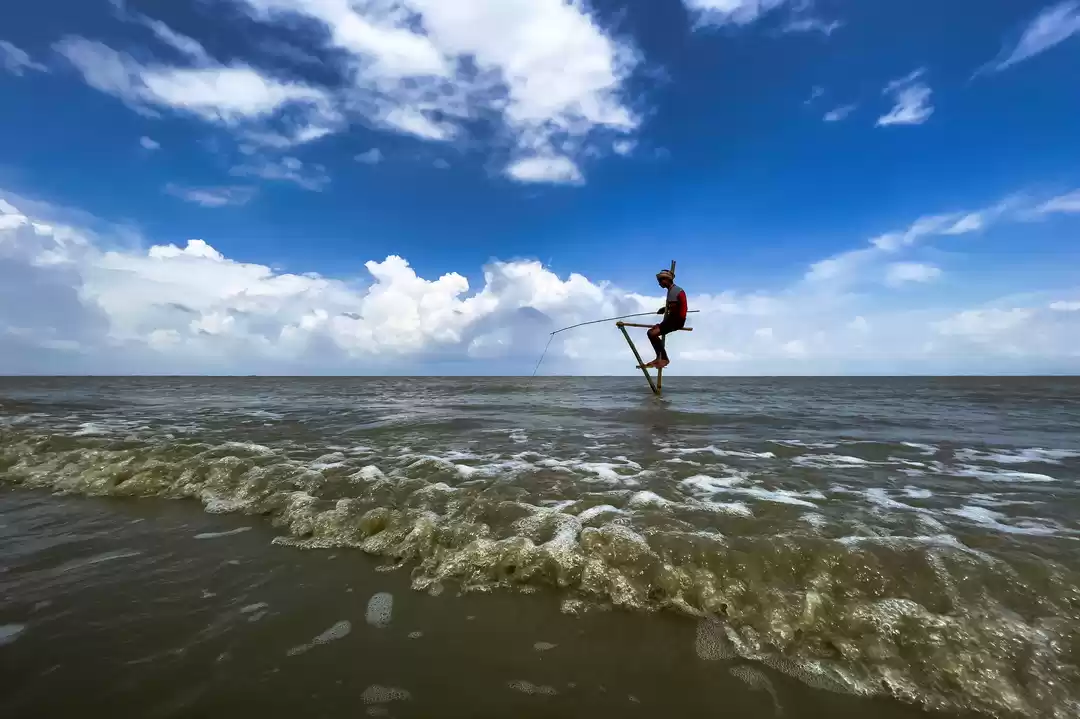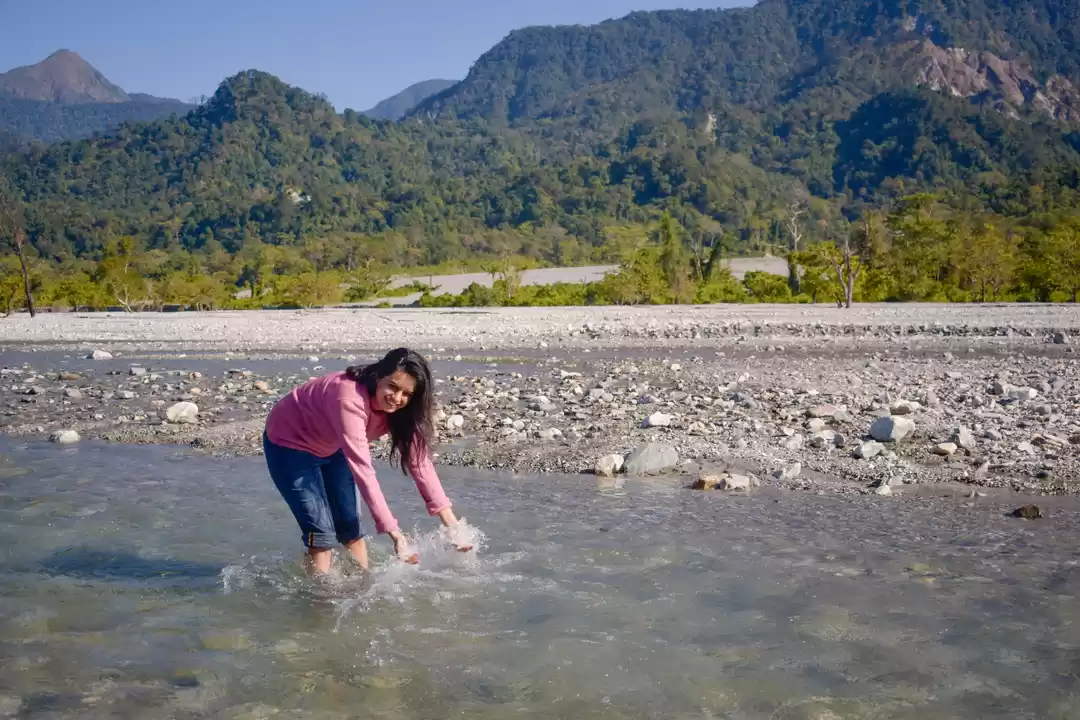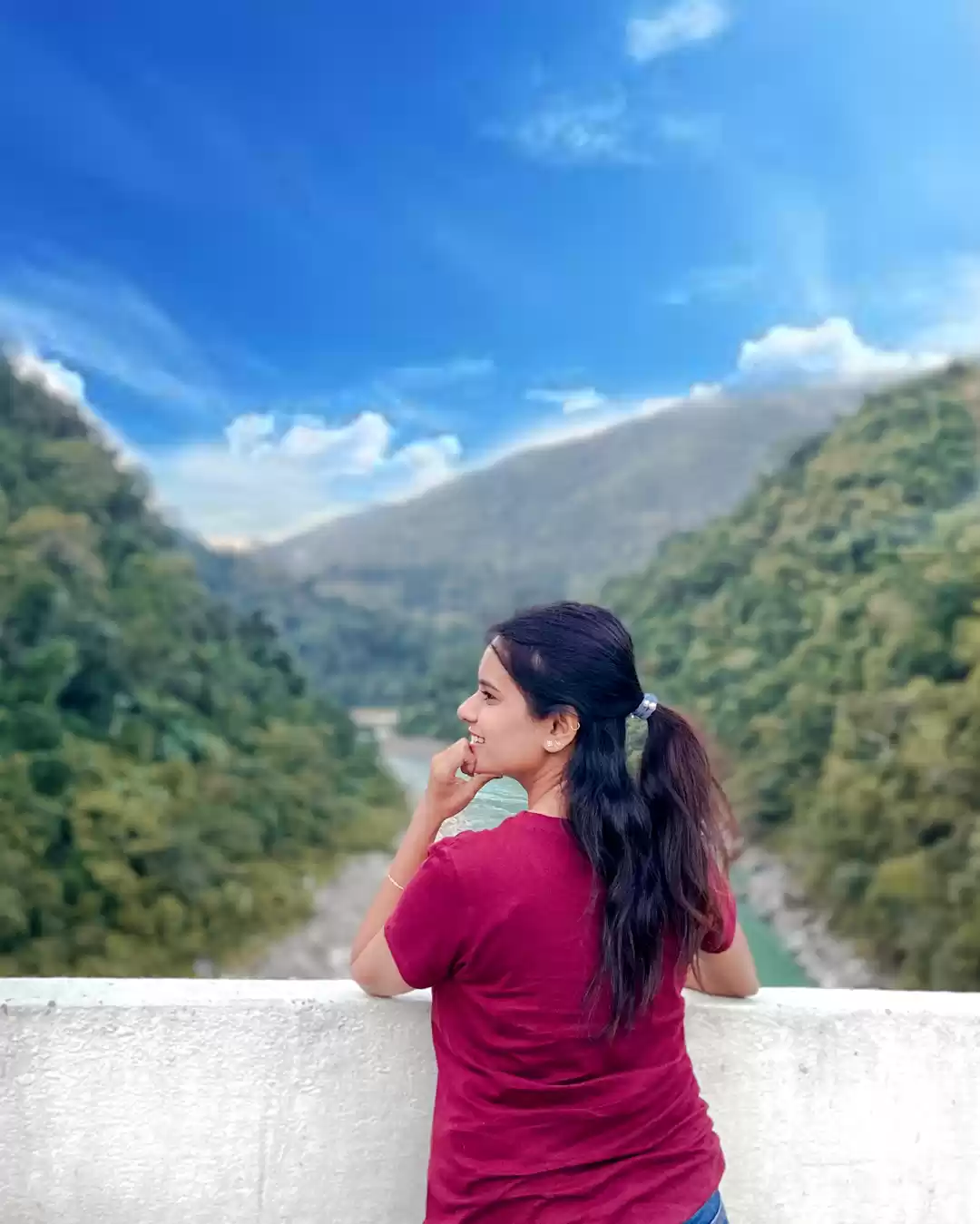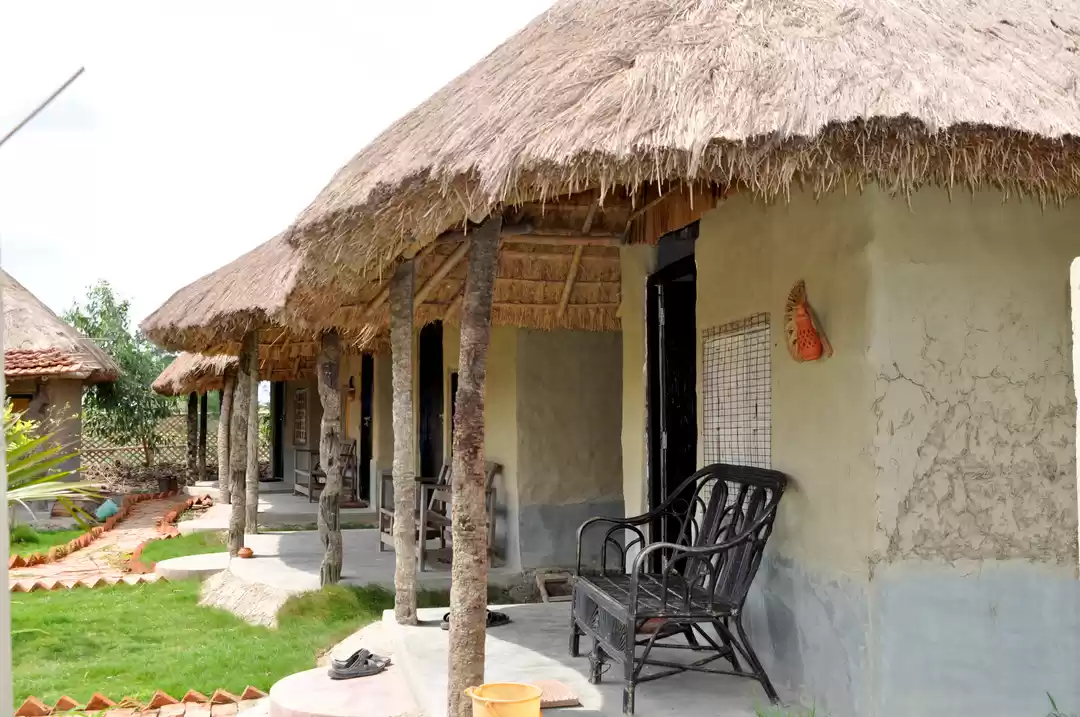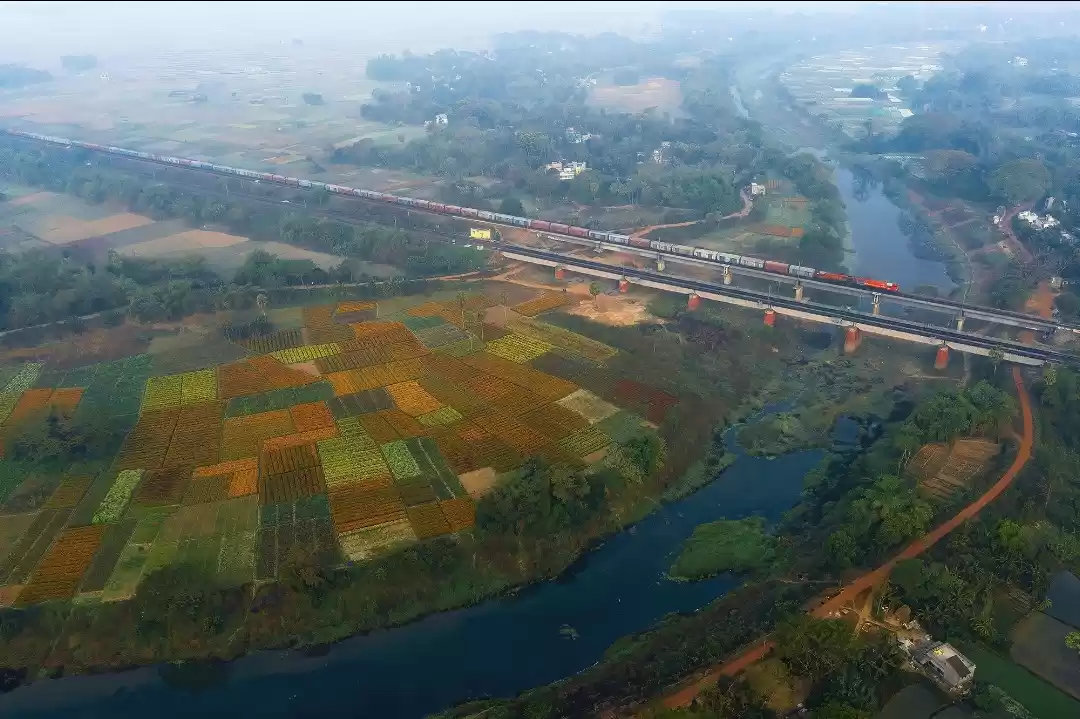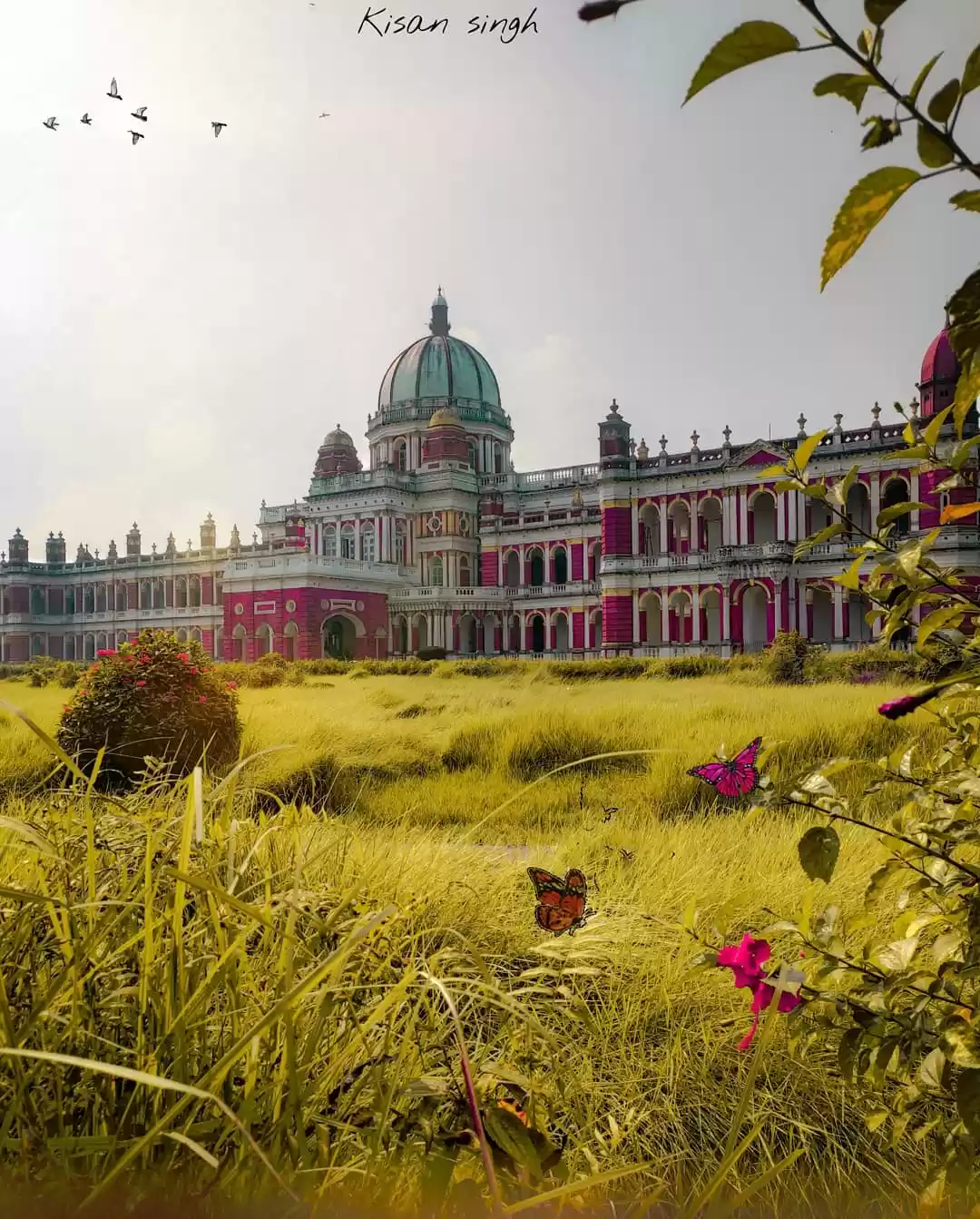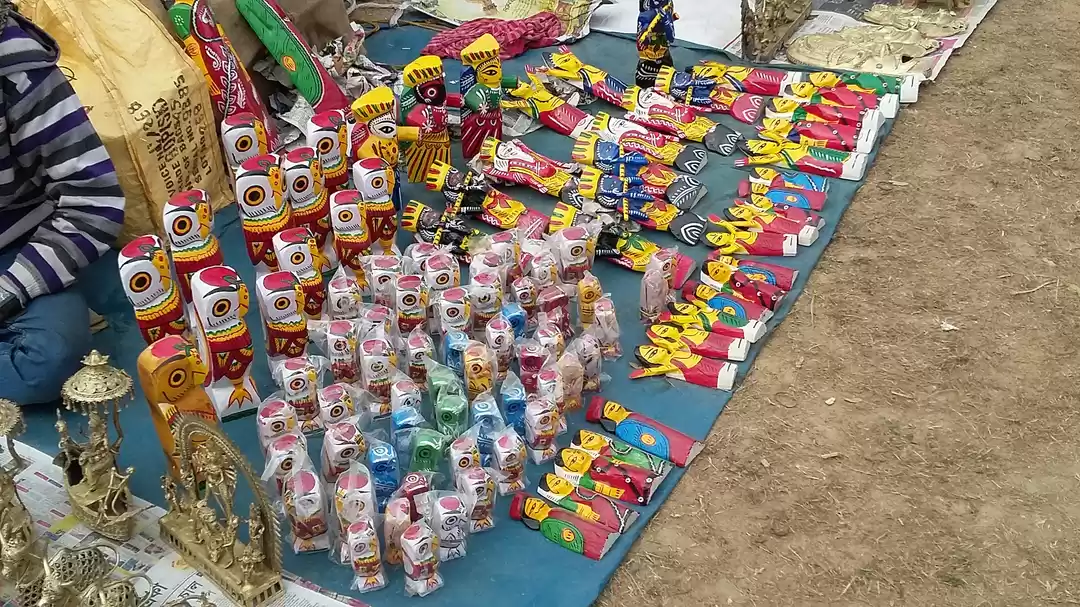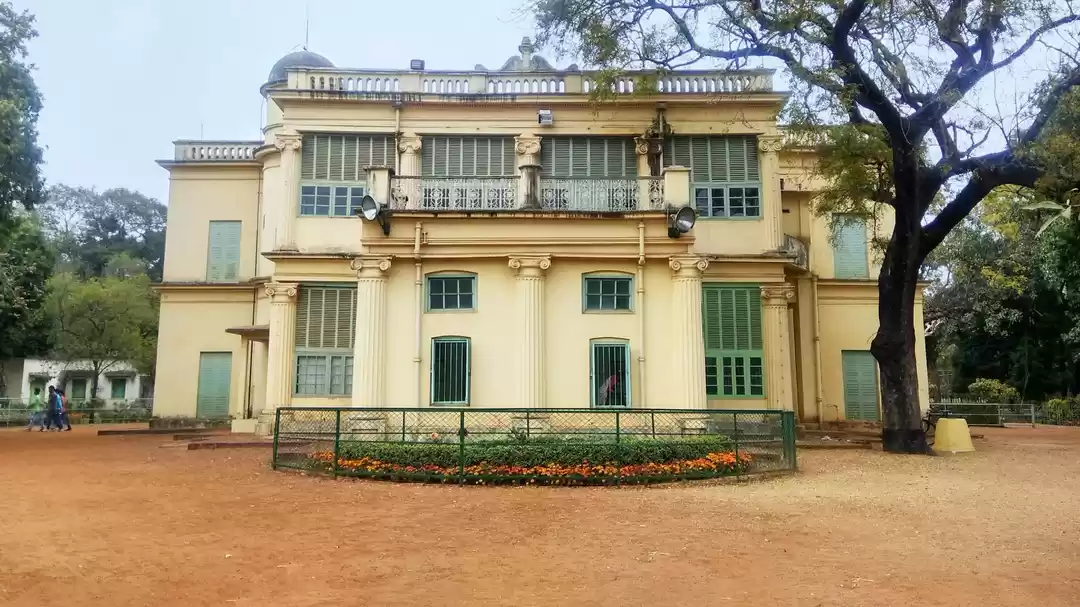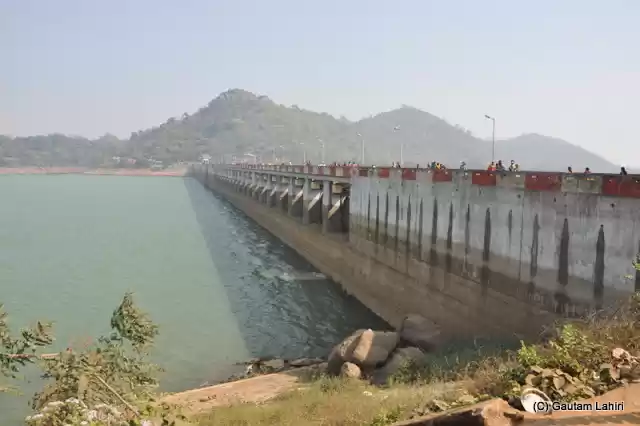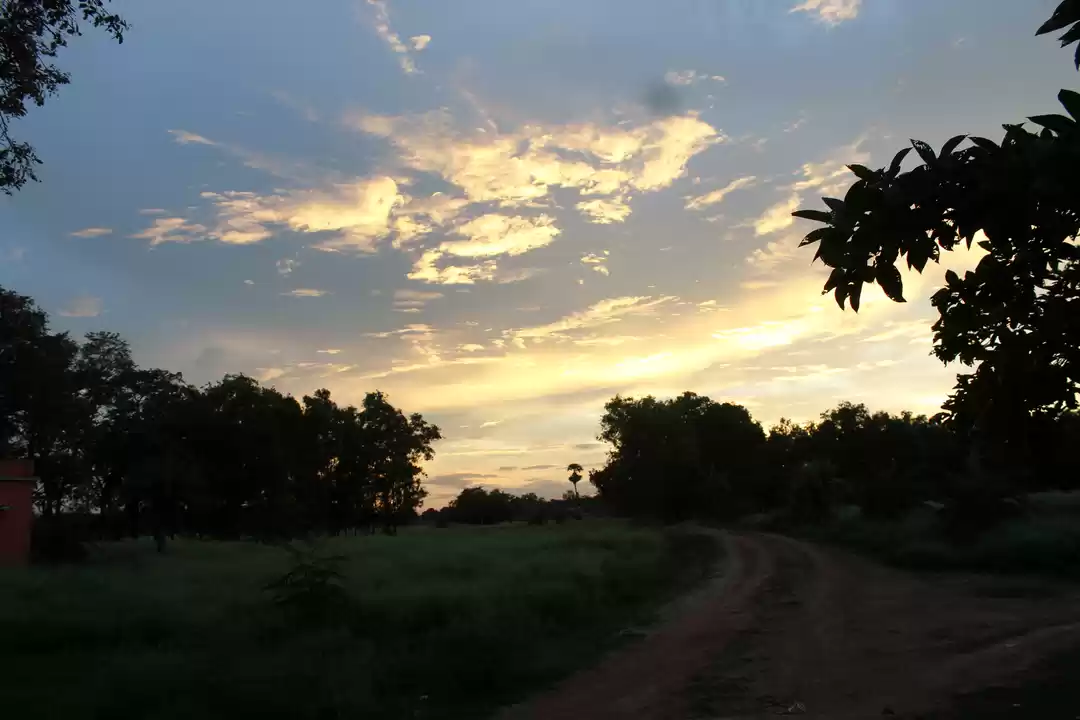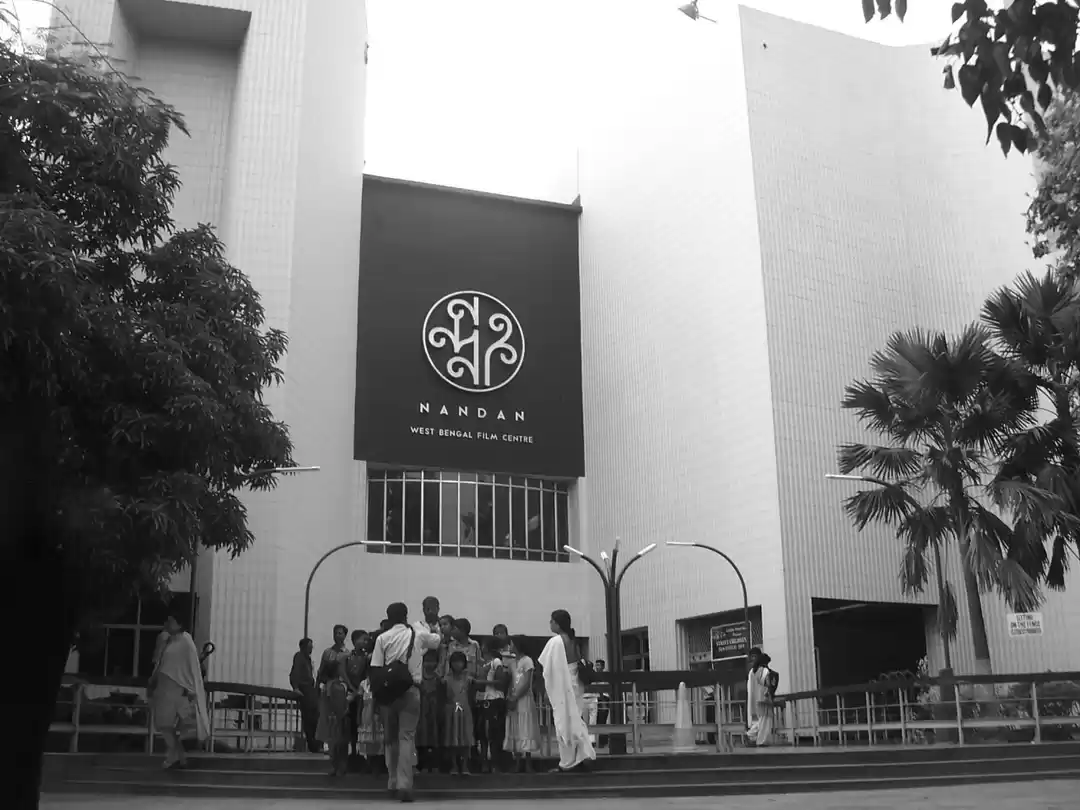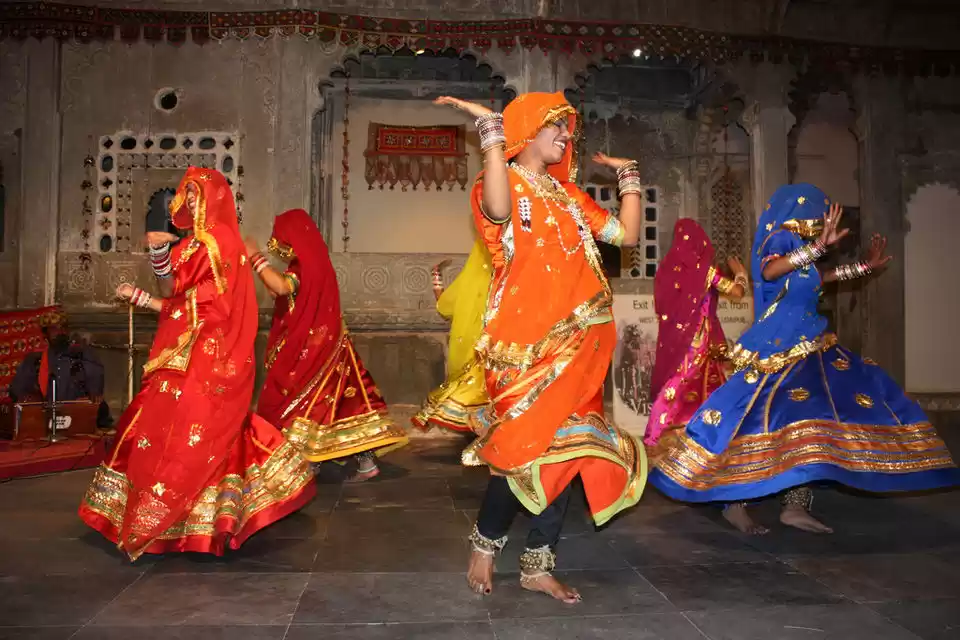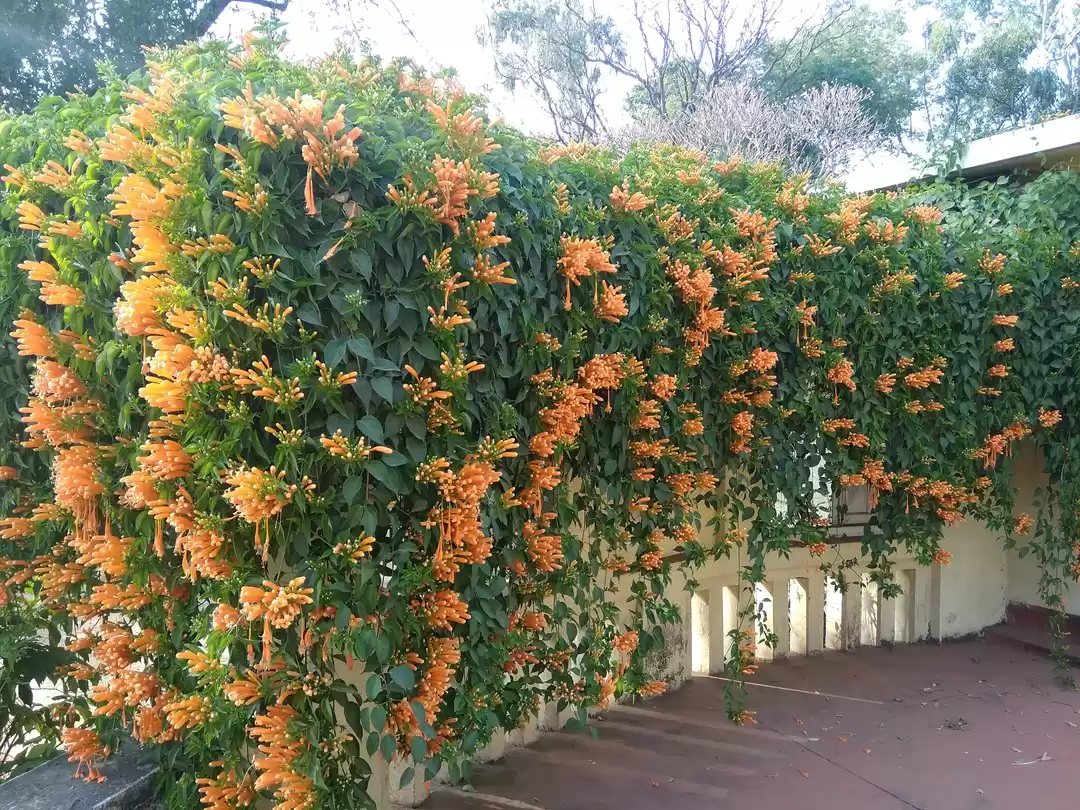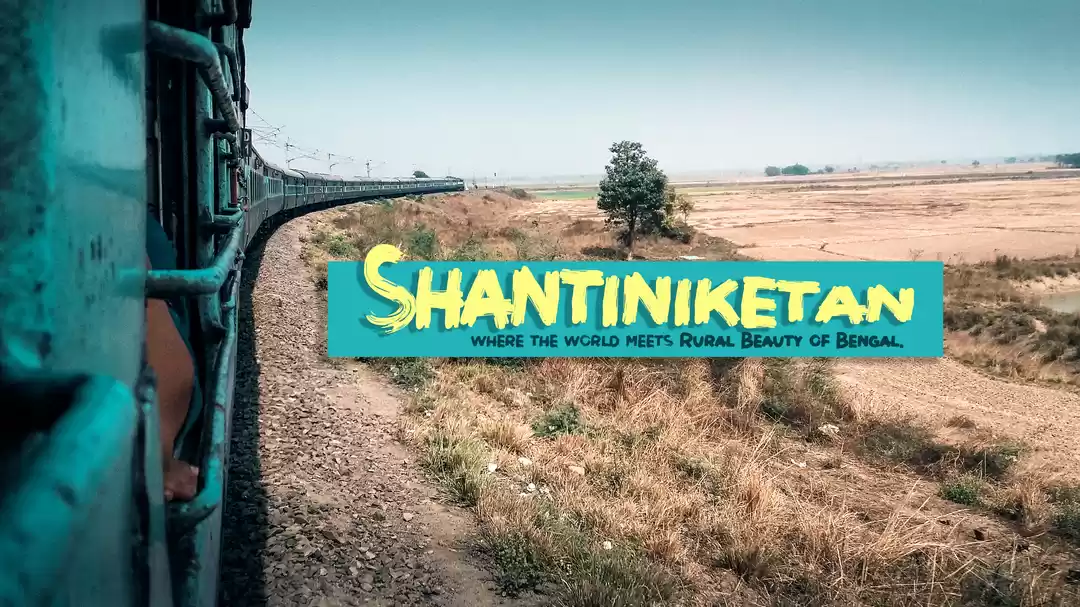I could see myself smiling as the glass panel above reflected myself. Yes, we are going to Santiniketan for a few days. Breaking open the shackles of a daily routine. I rang my home phone to confirm my family that we can get cracking on the holidays. All we had planned was a 4-5 days of break from the city; visit the famous 'poush mela', a fair and festival which gets held between 22nd and 27th of December every year at Santiniketan, located in Birbhum district of West Bengal state, India. The fair starts on the 7th day of the month of Poush, the fair is typically for three days, although vendors remain busy selling until 31st Dec.
We also wanted to see few live performances too of Bengali folk music, especially baul music as they are seen singing at various venues this time. Follow it with a drive around the town and visit few more places within a radius of 100 kms.
Well, not much you can cover in few days; will do it in a relaxed manner.
Eagerness overflowed, so we readied our trusted transport, the Swift diesel hatchback, an old war horse. Hurriedly, I scan the travel guides for an accommodation and we were just enough lucky to get a 4 day reservation in a local lodge near the Bolepur railway station.
Packing couple of suitcases with warm clothes as the place is colder than Kolkata, we hit the north-west bound highway, NH-2 at 1.30 pm IST which connects Kolkata to New Delhi. The afternoon sun played hide and seek with the smog knotted clouds, as the Swift made its way cutting the cool air of the highway. Around 4 pm, we take a break for 15 mins at Saktigarh, a small town in Burdwan district, 80 kms from Kolkata, famous for making 'Langcha', a spindle shaped syrupy fried sweet and anyone on this highway will stop for few items in particular - langcha, 'jhal muri' (a mix of puffed rice, shredded tomatoes, coriander, chilies and host of condiments), the tangy sensation in the mouth coupled with the cold breeze as you stare at the passing trains on the horizon is something we just won't miss.
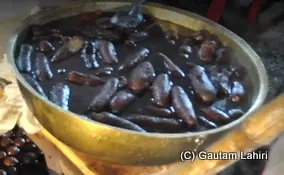
After the refreshments, we set off again and after driving roughly 16 kms, we take a right and leave the carpet smooth highway and venture on the state highway at a spot which takes you to a place called "Ghushkhara'. The car is tossed around as the tires negotiate one pot hole after the other. As the setting sun dips down, I narrow my eyes to sharpen my vision to concentrate on the road. This section has everything that you can think of - two wheeler of all shapes and size, small to big 12 wheeler trucks which you face and weave your car around and try boldly to hold on to the road. After a 52 kms travel, we reach 'Chaurasta' a busy intersection of four narrow roads. I ease a millimeter of clutch to reach 5 cms of travel, and I compete with seven electric auto rickshaws, seventy humans, around twenty two wheelers...all of them want to reach beyond that 5 cms at the same time. It's a wonder, no one touched each other at that closeness, After an hour of battle royal, we finally park in front of the lodge where we want to rest for the night. The hotel road was barely 10 feet wide and the Swift had to master all courage not to scrape while turning 7-8 turns for every 150 m stretch. Getting into the room, decently dressed up, we freshen up and get behind the wheel. The hotel manager taps the roof of the car, with a big white grin, informs us that during the fair, for 10 days, no vehicle is allowed in the vicinity of the fair ground; which means no car. So, we jump out and hire a 'Toto', an electrically powered auto rickshaw which has enough power to move 6-7 people in reasonable comfort.
With the cold evening breeze on the face, amidst chirping of the night birds, returning to the trees, we enjoy a bumpy chauffeured ride of twenty minutes and reach the fair.
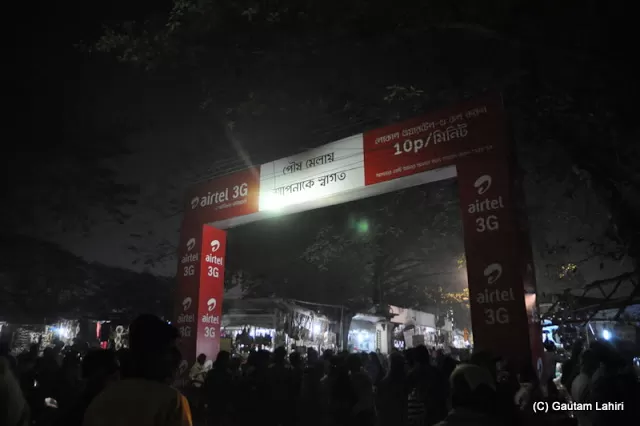
A huge column of people in winter dress, in all shades of color merrily make way towards the entrance. We join in and slip past it. The fair had stalls on either side of the pathway, with its vast array of handicrafts, pictured frames, hanging musical instruments, decorative bags, one will be confused to buy as the options were multiple.
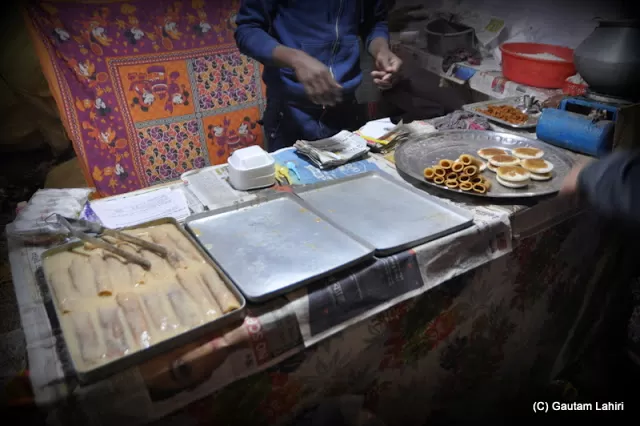
A bengali sweet known as 'pithe' made from rice, dipped in date tree juice was gracing one stall. They come in various forms - longitudinal, spherical and a saucer shaped one...all of them when you bite into, will take you to a sublime state of pure happiness. They taste so good.
Before you explore the fair food, you also have to remember the level of defense that your stomach has to have as all the food on display were lying in the open, and a fine crust of dust whipped up by thousands of shoes and slippers had settled...any gullible soul would mistake it has another shade of fried color..nevertheless, when hot, and served, they tasted golden.
We jostle pass tens and thousands of people, and a large section of them huddle around the food stalls, which have all kinds of sweets from 'Jalebis', "Rosogollas,' 'Sandesh, soft and dry in nature. The mixed smell of the food mingled with the white smoke coming out of the big black containers which had the boiling oil frying away samosas, somewhere langchas, kept us rooted to the stalls. You really have to struggle not to taste each one of them.
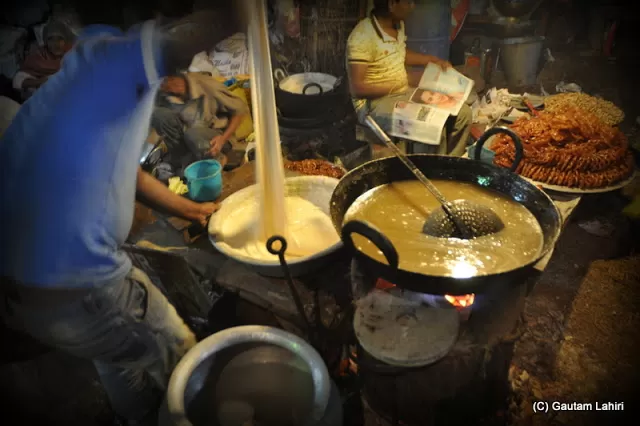
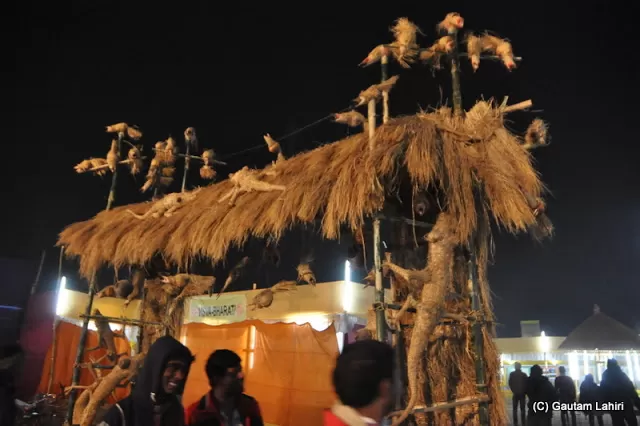
As we snaked around the stalls, the sheer beauty of craftsmanship will grip and keep you thinking why you don't have all the money in the world to buy everything you see and decorate your house. Flower vases, of all shapes, picture frames of Rabindranath Tagore, models of birds, like owl; exquisitely curved and made of jute...we felt very nice to see that jute is making a comeback in the modern age. We saw a gate made of bamboo and jute which had figures of birds, crocodile, loosely stitched over a hay stack ushering the visitors to see the jute products on display.
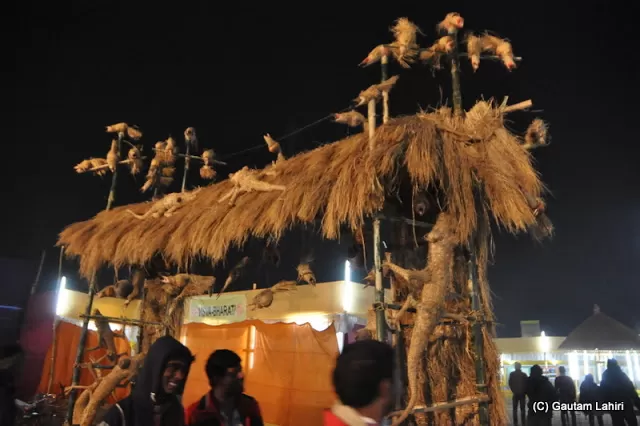
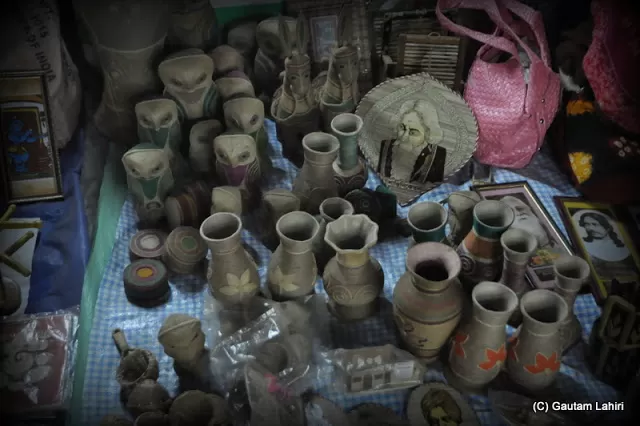
As we walked away from the jute stalls, the sound of drum beats caught our attention and we turned to see a podium where tribal dance was taking place. White dhoti clad young men were dancing to the rhythmic drum beats and we stood there for an hour to see. As the night deepened, the cold increased, the sound seemed to have an intoxicating effect.
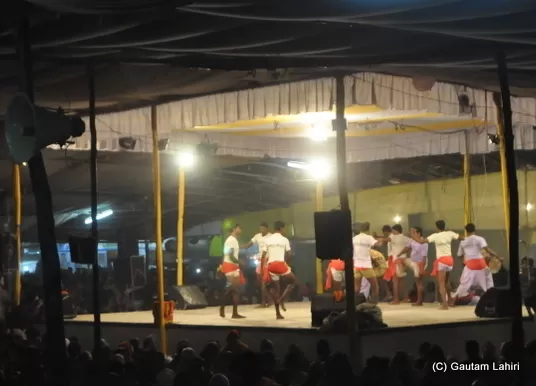
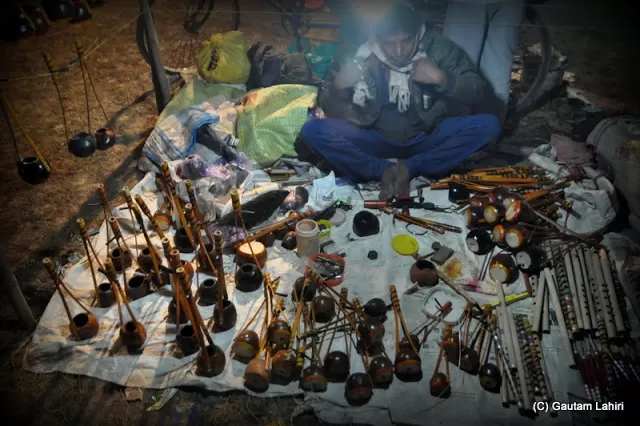
One item which we saw in abundance was the 'ektara', the single string musical instrument which the bauls play when they sing and dance, They were in all shapes and sizes. The sound of drum was also competing with a sweet voice of a young boy who was singing rabindra sangeet at another corner of the fair. The dedication with which the boy sang kept us glued for a while.
We hopped on to another stall which was selling delicately made, beautiful glassware products of birds, ganeshas and figures of ladies. I think the craftsmanship was at its very best. All around we saw items that would make any home, a marvelous one to visit. Small and big, colorful or monochrome, they were of finest quality.
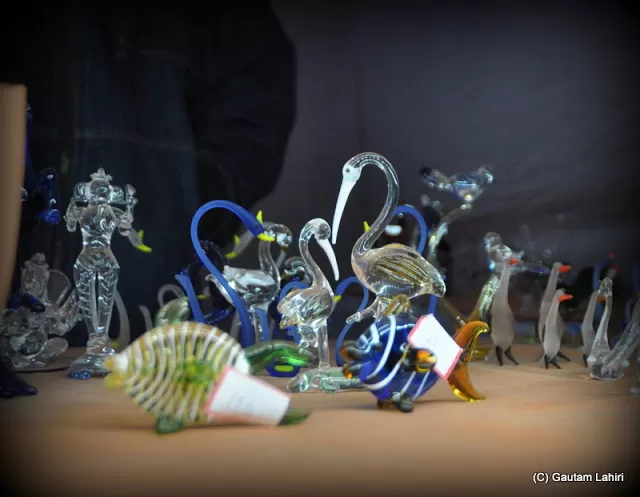
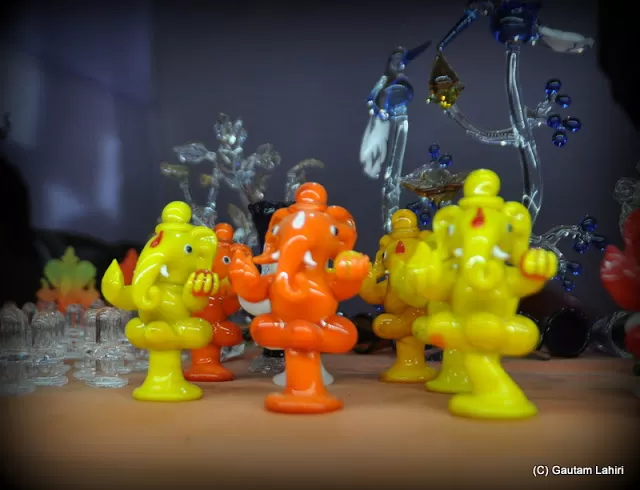
With so much of beauty absorbed, we come across a restaurant offering 'Chinese' dinner of mixed chowmein with chillie vegetables. Having had the popular and succulent dinner, we jump into a 'Toto' and make our way back to the hotel and rest for the night.
Following morning, we wanted to visit Rabindrantha Tagore's residence and museum. As I had visited Santiniketan during poush mela, I knew how difficult it is to take a car in the main town, especially around the exhibition ground. The cars are not allowed at all, so we parked about 5 kms in the outskirts and made a beeline for the museum.
The Humber car used by Tagore is I guess one of the illustrious vehicles of that era and has the honor of transporting great personalities like Mahatma Gandhi, Netaji Subhas Bose, CF Andrews. The car what we saw is kept in a glass case to prevent the ravages of time to reach her.
A 4 liter straight 6 engine propelled this big car.
We jostled through the crowd to see the museum, packed to capacity during the 'mela' season. Soon afterwards, we retired for the day and made plans to see the outskirts of Santiniketan.
This blog was originally published on 'The Voyager'






